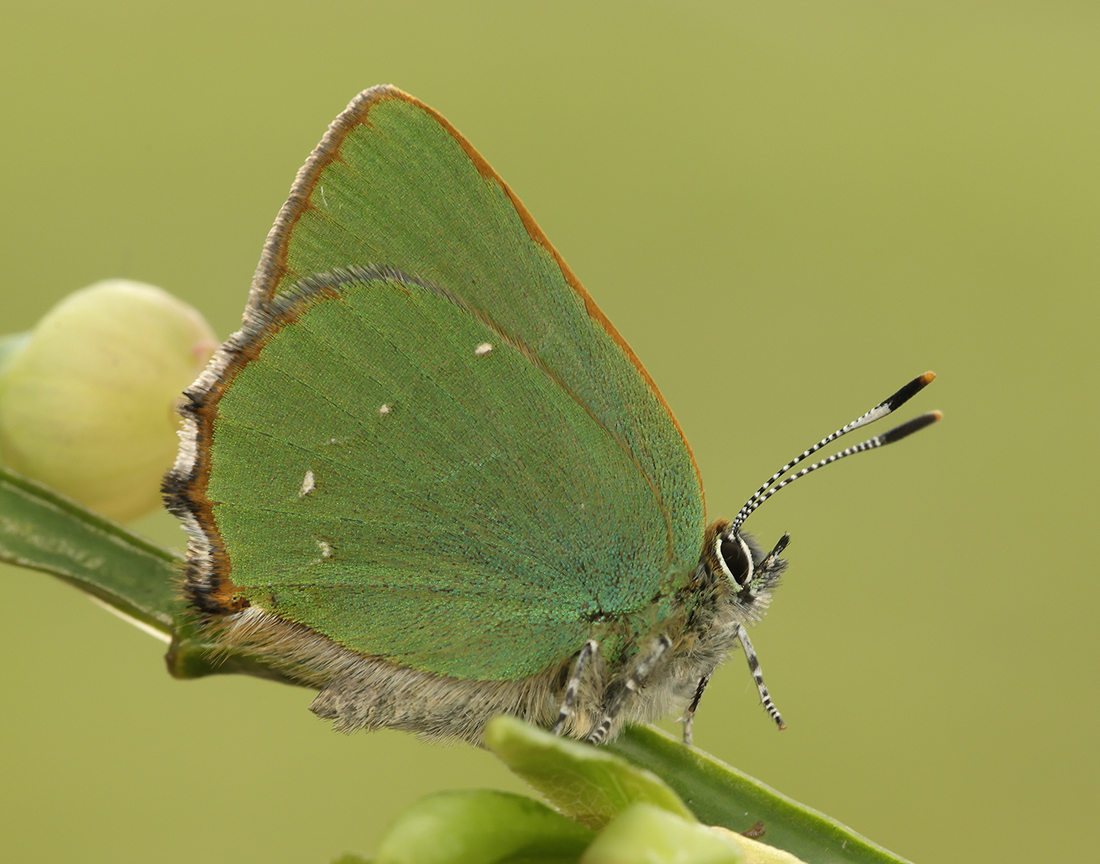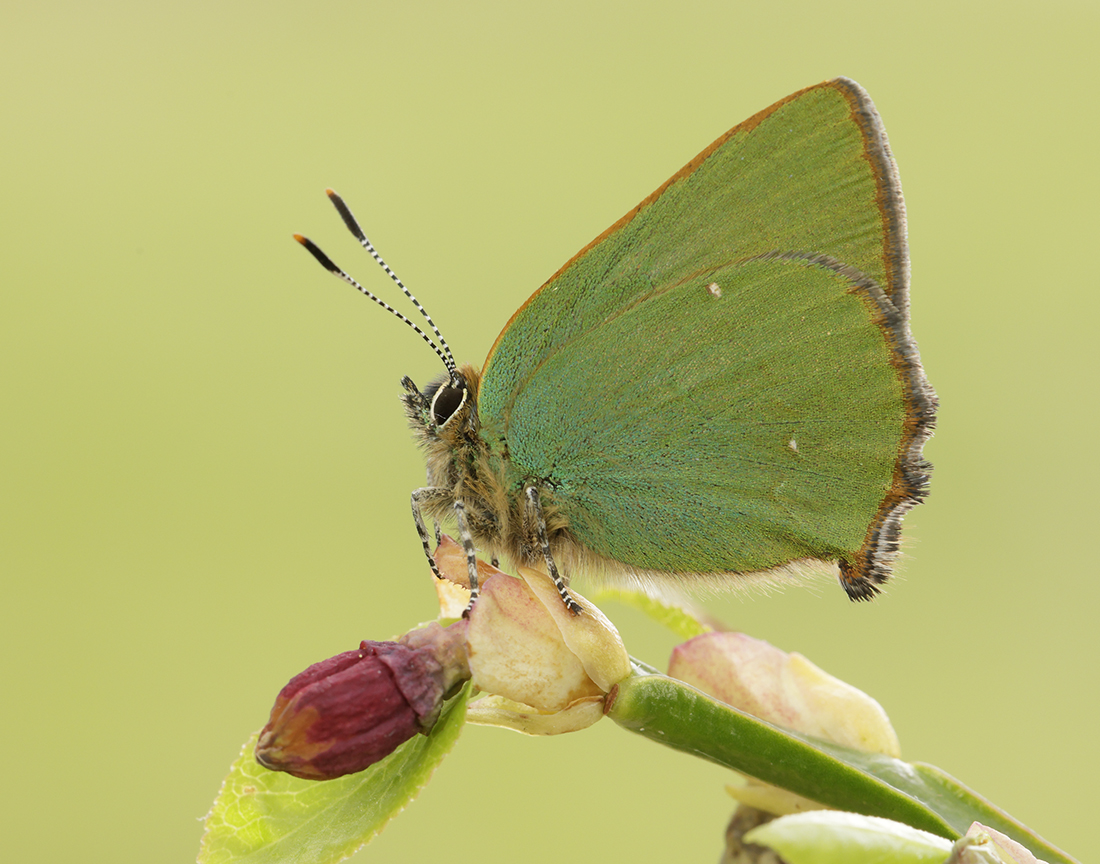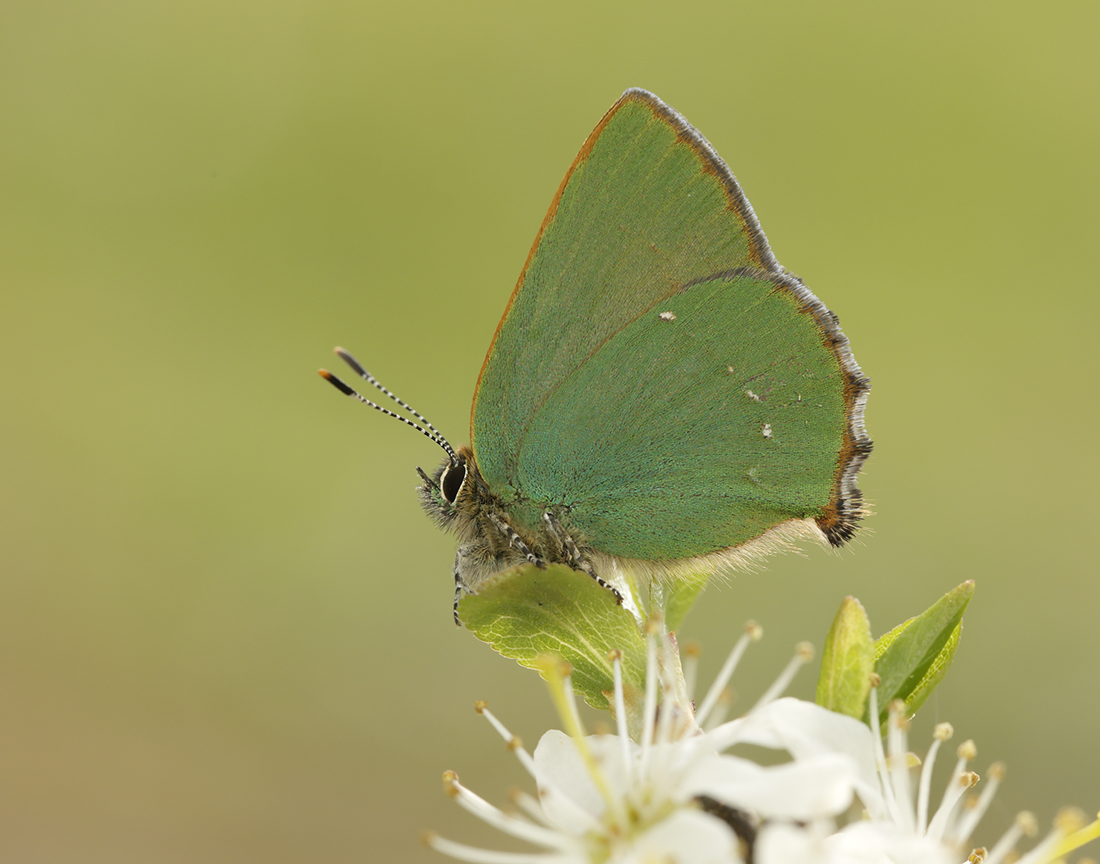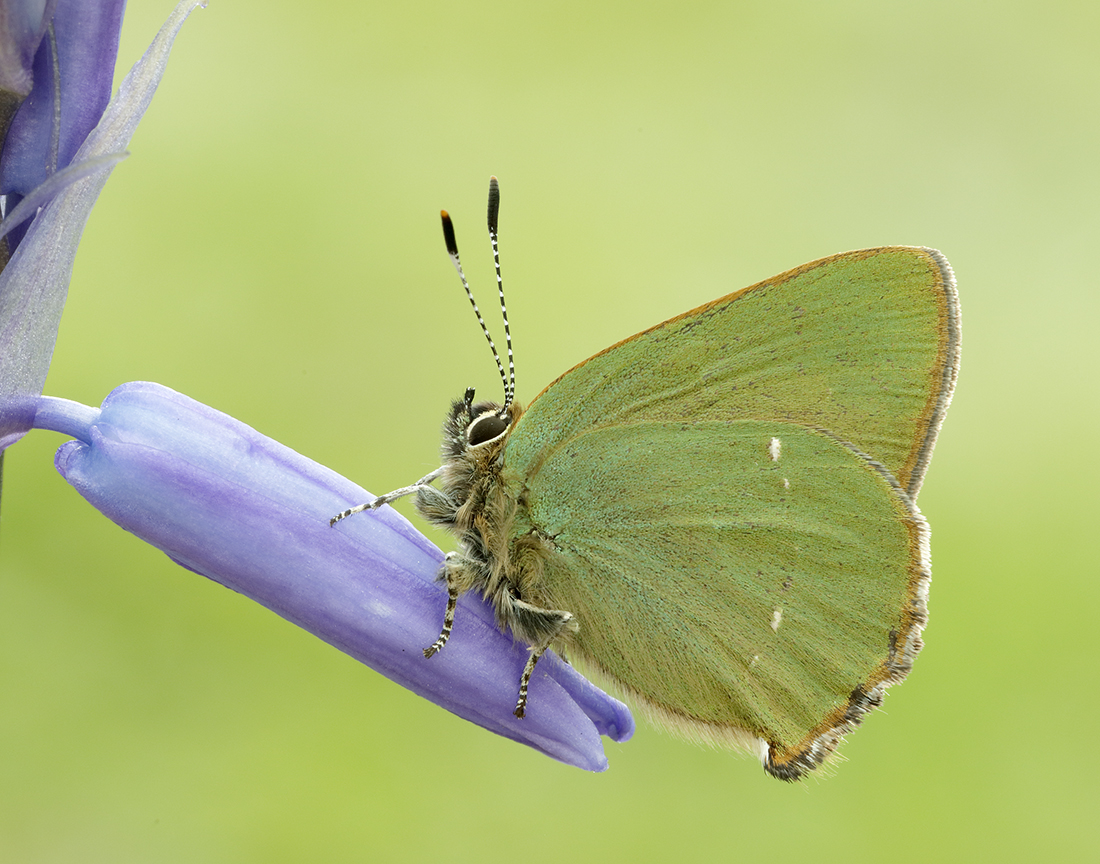The Green Hairstreak seems to be reasonably stable in terms of both distribution and abundance, but the trends we have are subject to some uncertainty. Although probably under-recorded, it is not as common as one might suppose, given that the caterpillars are able to feed on a very wide range of dwarf shrubs.
Identification
Its emerald green wings mean that it is often difficult to spot against the fresh green leaves of shrubs and trees where it will perch, always with its wings closed. It is even harder to spot in flight, the blur of its brown upper wings making it hard to follow. No other Scottish butterflies resemble the Green Hairstreak. There are a few green moths, some of which can be seen in the daytime, but these are all pale green, very different to the bright emerald green iridescence of the Green Hairstreak.
Life cycle & flight period
One generation a year, the adults peaking between early May and early June. Overwinters as a pupa. Like many of its cousins in the Lycaenid family, it seems to have an association with ants, and overwintering pupae have been found in ants’ nests.
Larval foodplant
At many sites its caterpillars seem to feed mainly on Blaeberry, especially on moorland. In the lowlands it is likely to be using Gorse, Bramble and heathers, as well as Blaeberry, but it can also use Cranberry, Broom, Common Bird’s-foot-trefoil and Common Rock-rose.
Habitats
The Green Hairstreak prefers sheltered sites near woodland or along the scrubby edges of peat bogs and moorland. The grazing levels on many of our grass-dominated hills have reduced from a few years ago allowing Blaeberry to grow more luxuriantly, benefiting the butterfly.








